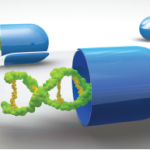I’ll just add that in some patients who have had pretty severe manifestations in the past, like gastrointestinal involvement, I may be more hesitant to stop maintenance therapies.
Q: Can you explain why the guidelines recommend a ‘double punch’ skin biopsy and sampling both nerve and muscle tissue together?
Dr. Springer: PAN can be a difficult diagnosis to confirm and often depends on either biopsy or imaging findings. The skin is a very high-yield area, and it can be low risk to get a biopsy when patients do have skin involvement. The challenge is that these are medium vessels, so they’re deeper vessels. That’s why doing a punch within a punch has been so effective in terms of getting down to those deeper tissues. Dermatologists typically use a wider bore punch initially to get the superficial layers, and then within that, a narrower bore to reach the medium-caliber vessels.
The nerve biopsy has potential for risk, although it’s still pretty safe, and can also be very high yield. There are studies that note the yield is higher if you go for the muscle as well, and if you’re already in there for the nerve biopsy, getting some muscle tissue doesn’t increase the risk of that biopsy significantly.
Q: What led the panel to recommend disease-modifying anti-rheumatic drug (DMARD) therapy instead of glucocorticoids alone? And is there still a role for glucocorticoid monotherapy, or do you think that everyone deserves glucocorticoids plus a DMARD up front?
Dr. Springer: We limited our literature review to primary systemic PAN, so secondary causes of PAN—like hepatitis B-associated PAN and single-organ limited PAN—weren’t the focus of the guideline. I think that’s an important point, because I may treat isolated PAN, like cutaneous PAN, with glucocorticoid monotherapy.
Many of the clinical trials in PAN utilize the Five Factor Score [i.e., older than 65 years, cardiac insufficiency, renal insufficiency, gastrointestinal involvement, absence of ear-nose-throat manifestations], which has prognostic value in terms of predicting mortality in these patients, with a higher score equating to a worse mortality.6 But I think there are some important considerations to think about when you evaluate the Five Factor Score.
First, the initial Five Factor Score was based on a mixed population, not just patients with PAN, but also with eosinophilic granulomatosis with polyangiitis (EGPA) and MPA. And the revised Five Factor Score also included granulomatosis with polyangiitis (GPA), which is why sinus involvement is included as one of the factors.6,7



